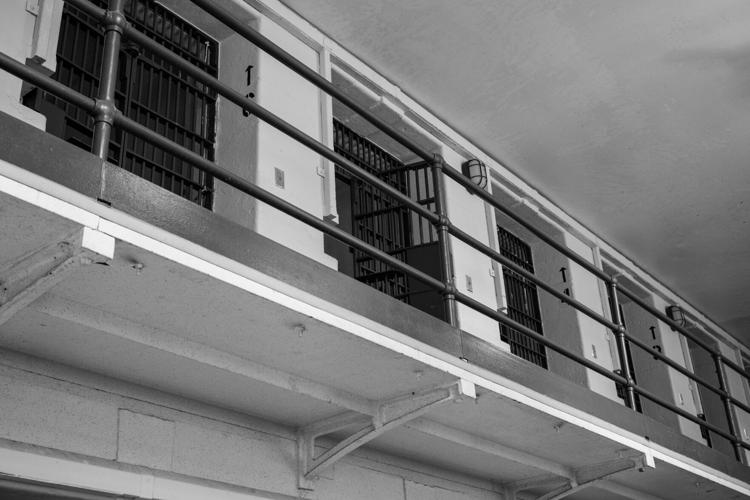
Rather than isolate prison violence as exceptional, “Carceral Apartheid” reveals it as central to how the U.S. governs through deception, racial division, and systemic erasure.
It is common in literature to encounter a book that makes demands of its reader. It is far less common for a book to not only ask the reader to confront an issue, but to implicate them as an active participant in it.
The central thesis in “Carceral Apartheid” is urgent and unflinching: that the U.S. prison system, particularly through the California Department of Corrections, operates as a mechanism of racialized governance rooted in white supremacy. Author Brittany Friedman interrogates the horrors of mass incarceration with a sociological precision sharpened by lived memory and an ethical commitment to truth-telling.
She names this regime “carceral apartheid”, a term that seeks not only to categorize but to indict. In Friedman’s words, “Carceral apartheid spares no one, and all must adapt.”
Friedman’s work here is deeply historical and achingly present. She traces the carceral state’s architecture of control back to the 1950s, showing how prison administrators (particularly in California) designed protocols to isolate and, in many cases, eliminate Black political resistance. Through vivid case studies, especially that of Hugo Pinell and the founding of the Black Guerilla Family, Friedman demonstrates how prisons serve to discredit and disappear Black radicalism. The argument unfolds across an intricate weave of archival materials, interviews with incarcerated people and sociopolitical theory, where the stakes are not abstract but life and death.
Friedman is at her most powerful when detailing how correctional officers and state actors forged unholy alliances with imprisoned white supremacist groups like the Aryan Brotherhood to wage war on Black militants. What she uncovers is a systematized tactic, where extralegal violence sustains the prison-industrial complex. Through these revelations, she makes legible how prisons are ideological institutions, manufacturing narratives that justify violence against certain populations while cloaking their own structural crimes.
Friedman writes, “To them, the Adjustment Center symbolized the department’s intention to intimidate, control and silence Black political opposition. This rising tension would eventually reach a breaking point for both the Department of Corrections and Black militants.”
One of the book’s most potent contributions lies in its methodological stance. Friedman does not claim the role of detached observer. Instead, she practices what she calls “truth-telling as method,” drawing explicitly from Black feminist traditions of embodied knowledge and intergenerational storytelling. The prologue grounds this approach in personal memory—scenes of roadside intimidation in Missouri, of intergenerational resilience shaped by sharecropping and segregation—serve not as anecdotal flourish but as epistemic foundation. In doing so, she demonstrates that the systemic violence of prisons leaks into the cultural and psychic landscapes of Black life across generations.
Yet, while the book’s affective grounding is one of its strengths, it can occasionally blur the analytic sharpness. There are moments where the narrative dips into poetic registers that, while powerful, momentarily loosen the theoretical hold. Readers unfamiliar with the historical background of COINTELPRO or the specific hierarchies of California’s prison gangs may find themselves scrambling for footing. But Friedman does not spoon-feed the reader. She writes with the assumption that you, too, have a stake in truth.
What makes the book especially effective is its ability to pull the reader through registers of scale, from the microphysics of solitary confinement to the macrostructures of racial capitalism. The prison is not a failed project of reform but a successful instrument of power designed to uphold white supremacy.

“Carceral Apartheid” is a searing indictment of American incarceration, exposing how white supremacy and state-sanctioned lies converge to shape a regime of racialized control.
Particularly interesting is Friedman’s attention to the racial scripting of “problem inmates,” a bureaucratic term that functions as a cipher for Black political prisoners. Through declassified memos, she reveals how state power depends on constructing threats it can then neutralize. The Adjustment Centers and Security Housing Units in California become laboratories of carceral engineering, sites where the state refines its techniques of disappearance.
Friedman’s claim that the U.S. prison system models forms of genocide is certain to provoke, but it is well substantiated. She outlines a convergence of state violence, surveillance and psychological warfare that meets the UN definitions of genocidal practice—not through mass execution but through systemic dehumanization and targeted annihilation of a political class. Her framework insists that genocide can be slow and wrapped in legal legitimacy.
Where the book might go further is in mapping the structural incentives beyond the state’s racial animus. While Friedman offers glimpses into the profit motives behind carceral expansion and mentions the extraction of non-white labor, a fuller integration of political economy would sharpen her argument. Who benefits, materially, from this architecture of apartheid? How do corporate interest interlace with the white supremacist scaffolding she outlines? These questions linger on the edges but are not fully explored.
Moreover, while Friedman touches on international comparisons, offering a “World Edition” chronology alongside a U.S.-based one, the global dimensions of carceral power are largely suggestive rather than developed. Given her invocation of apartheid as a global political form, more attention to carceral logics in postcolonial or settler-colonial contexts (e.g., Palestine, South Africa, Brazil) could enrich the work.
Still, “Carceral Apartheid” succeeds because it unravels the deceit that sustains it. Lies are not incidental. They are the architecture. Bureaucratic misdirection, public relations spin and official silence are all tools of a larger disinformation project that shields the violence of the carceral state from public scrutiny. By lifting this veil, Friedman implicates not only the prison system, but the broader public that has allowed such conditions to fester.
This is where Friedman implicates the reader in by refusing to treat the prison system as something distant. Instead, she reveals it as an active and ongoing structure of racial governance that is made possible through collective complicity. Through silence, through media disinformation, through the myth of criminality and through the illusion that state violence is just or isolated. She frames white supremacy as a governing structure that recruits ordinary people, especially white civilians, as extensions of state power.
In a moment where calls for prison reform increasingly risk being co-opted into neoliberal frameworks, “Carceral Apartheid” refuses accommodation. And in doing so, it repositions the prison as a site of profound political clarity. The question is not whether the prison is broken, but whether it is doing exactly what it was designed to do.
You can buy a copy of “Carceral Apartheid: How Lies and White Supremacists Run Our Prisons" here.













(0) comments
Welcome to the discussion.
Log In
Keep it Clean. Please avoid obscene, vulgar, lewd, racist or sexually-oriented language.
PLEASE TURN OFF YOUR CAPS LOCK.
Don't Threaten. Threats of harming another person will not be tolerated.
Be Truthful. Don't knowingly lie about anyone or anything.
Be Nice. No racism, sexism or any sort of -ism that is degrading to another person.
Be Proactive. Use the 'Report' link on each comment to let us know of abusive posts.
Share with Us. We'd love to hear eyewitness accounts, the history behind an article.